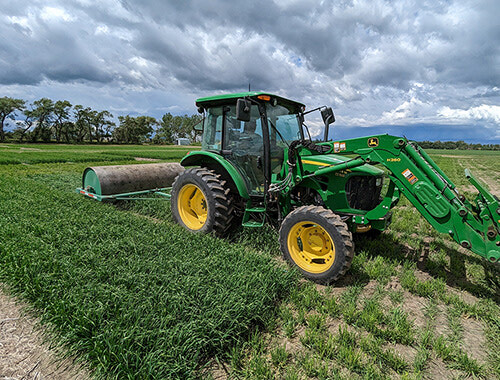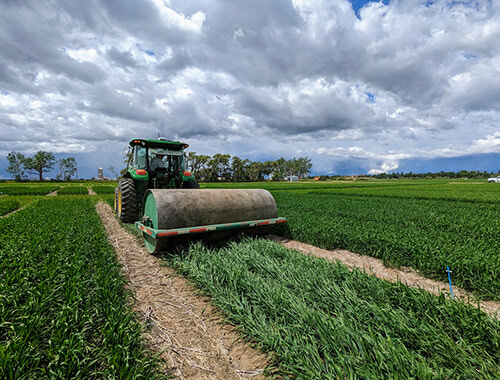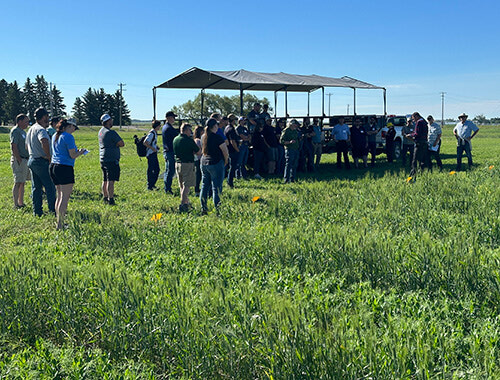by Madeleine Baerg, for the Fall 2022 Farming Smarter Magazine
Alberta’s farmers increasingly divide into two camps: those who have land, and those who wish they did.
For those who own their acres, land appreciation now typically contributes more to the farm business’ overall value than any commodity that farm can produce. For farmers who would like to enter agriculture or expand farm businesses, however, the often out-of-reach price of land has become a major stumbling block.
“Prime land is a hot commodity. There is simply not enough available,” says realtor Ben van Dyk, who specializes in farmland real estate in southern Alberta.
He says that, where land used to be perceived as an asset that supported someone to make a living, land is now an investment vehicle and asset generator for becoming wealthy.
“If you purchased five years ago, a quarter section went for about a million and a half. That land is today worth $2.7 to $3 million. So, somebody accumulated – and by not working - about a million and a half [dollars] in net value without paying any taxes. That has brought many, many buyers into the market.”
According to Farm Credit Canada, the cost of agricultural land in Alberta more than doubled between 2010 and 2021, rising from an average of just over $1,500/ac to nearly $3,200/ac across the province. In southern Alberta, the numbers are more daunting: in 2021 alone, non-irrigated land increased 6.2% to an average of $4,400/ac; irrigated land rose 10.7% to an average of $11,500/ac. That price makes irrigated farmland in southern Alberta more than twice the cost of irrigated acres in Saskatchewan’s priciest west-central and south-western regions.
|
|
| Land for auction in 2022. |
While the price of land is a growing hurdle, there remain opportunities for farmers to buy into agriculture or expand their land access if they’re open to a slightly different mindset.
“It all comes down to challenging yourself. What do you want to do? How do you see yourself involved in the industry and adding value? Things change so rapidly. For anyone who wants to get into agriculture, get skills and be adaptable to change,” says van Dyk.
Van Dyk sees new entrant farmers now pursuing two land access strategies:
Option one: collaboration, either with retiring farmers that want to hold onto their land but can’t farm it any longer, or with investors who acquire land but haven’t the ability or interest to operate it. Rental, crop sharing, and partnership land is available via both formalized land matching programs and independent connections.
Option two: intensification As van Dyk says, “You don't need a lot of acres to achieve a profitability level if you can become market savvy in developing products and marketing directly to consumers, either through the internet or through farmers markets.”
Fresh corn, he says, can bring in $15,000/acre. Organic garlic can hit $30,000/acre.
“If you're doing 10 or 20 acres, you could already make a living if you’ve got good marketing skills. You're only limited by your own imagination and how you want to achieve your goals. There are different ways of setting out for success.”
While it’s up to young farmers to be creative, it’s also up to the industry to support them, says Farming Smarter’s executive director, Ken Coles.
“The cost of land and the costs of inputs mean farming today carries very substantial financial risk, and that’s without even getting into the challenges of weather and market volatility. That’s why it’s critical that organizations like Farming Smarter remove some of the risk by researching new crop varieties, new agronomic techniques and new technologies so farmers don’t have to themselves. They can take what’s already proven to work in the region and apply it to their acres.”
It's also up to industry to consider and respond to the new realities that high land prices bring. One major example is that, as more land is run by tenant farmers, industry needs to encourage healthy land management.
Early this summer, the University of Alberta’s Parkland Institute published a new report that argues investors’ interest in Albertan farmland is negatively impacting rural Alberta and fundamentally changing how farmers farm. The report’s author Katherine Aske says the high cost of land is resulting in much more rented farmland and consequently, shorter-term, less sustainable farming practices.
As the report says, “Tenant farming … leaves farmers in precarious economic positions, disconnects them from the long-term health of the land, limits their autonomy, and inhibits them from transitioning to regenerative practice.”
Coles says farmers have mentioned concerns about the same issue to him.
“[We’ve heard] reports from local farmers who have noticed that often land erosion issues occur on fields owned by people or companies that don’t live on the land.”
He says he’s happy to see at least a little more appetite among investment companies of late to add sustainability metrics to their rental expectations.
“Abuse of the land does look bad for whatever investor owns it, so now in some cases they’ll only rent to farmers who can prove they’ll take care of the land. A conservation minded farmer who can prove to the landowner that they operate in a good way might have an edge in getting the land.”
This spring, Athabasca-Barrhead-Westlock MLA Glenn van Dijken put forth a private member’s bill advocating for Alberta to follow Saskatchewan’s lead in tracking and potentially regulating farmland purchases by investors.
Whether government oversight or intervention is necessary is debatable, but government certainly has a role to play.
“Farming is fundamental to Alberta and farmers are the original stewards of the land,” says Coles. “Farmers – all farmers, whether they’re renters or landowners, new to farming or experienced – need access to adequate education, extension and resources that support both economic and agronomic sustainability.”




